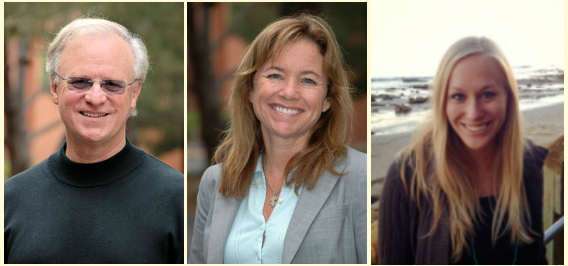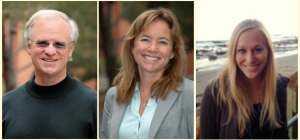Using a Child’s Restricted Interest to Increase Social Inclusion
September 01, 2016
By Robert L. Koegel, Lynn Kern Koegel, and Kelsey Oliver
In spite of the noted importance of having programs for developing socialization in children with autism spectrum disorder (ASD), many children with ASD receive no support while they are in school, most notably during times like recess and lunch when there should be many opportunities for social interaction with typical peers. Some students with ASD, in fact, have no such social goals on their IEPs.

Over the last few decades, one of the approaches used to increase social inclusion is based on capitalizing on aspects of autism that previously have been considered to be a weakness. For example, many children with ASD have extremely restricted perseverative interests (those that the student is intensely interested in or exclusively occupied by) that may interfere with their motivation to interact socially with their peers. However, if that extremely desired topic or activity is seamlessly woven into a social activity, we see huge improvements in socialization.
This approach builds on the idea of inclusion as synonymous with fully inclusive education alongside typically developing peers throughout the day by making sure that children with ASD can take part in regular school activities, including, for example, school clubs.
Organizing and Implementing School Clubs
Within a full inclusion context wherein students with ASD participate with their typically developing peers for the entirety of the day, school clubs may provide a context for offering that social activity for students with autism. By participating in clubs, they can to learn to socialize with their typically developing peers in a fun and natural context that incorporates their desired topics or activities. These steps explain how teachers, administrators, and/or parents can set up those kinds of clubs:
As You Organize and Supervise
Keep these points in mind when you are developing the clubs or modifying existing clubs that incorporate preferred or perseverative interests:
Include Social Goals in the IEP
How will you make this happen? All students with ASD should have social goals in their IEP, and this strategy of arranging inclusive school clubs that incorporate perseverative interests can be included. The IEP should contain specific relevant goals, such as initiating a social interaction, engaging in social reciprocation during social conversation with peers, asking questions, giving compliments, taking turns, and so on. Some students will need quite a bit of support and others will take off in this type of inclusive school setting with little to no extra support. Thus, it is important that a student’s IEP also specify the extent and nature of support they will receive from a paraprofessional during these social clubs.
The benefits of these clubs for students with ASD have been enormous. We often see some of these children completely isolated and appearing unhappy during recess and lunch. Designing a club around their interests can change that. Because the restricted interest is so high on their reinforcer hierarchy, it’s difficult to find anything that is more motivating. In fact, because we’re working in their area of greatest interest and strengths, they often are the most valued members of the peer group.
Developing school clubs that are inclusive of the entire student population while also incorporating the preferred or perseverative interests of a student with ASD seems to be a highly effective strategy for increasing socialization. Many students are driven to seek out their perseverative interest at the expense of socializing with peers. Incorporating their perseverative interests into social clubs create a perfect outlet for combining highly motivating interests with the important goal of peer socialization.
Turning what is often seen as a negative symptom—a restricted interest—into a strength through the use of social clubs that incorporate those interests can facilitate social development for children with ASD. The child’s peers at school benefit as well. When we set up social programs, we often see collateral benefits for peers who are shy, altruistic, or just prefer a little more structure in their day. When inclusion is done properly, it benefits all children.
For more information on how to motivate children with autism, see the PRT Pocket Guide.
 Drs. Robert and Lynn Koegel, who lead the Koegel Autism Center at the University of California, Santa Barbara, are the developers of Pivotal Response Treatment (PRT). The Koegels and the Center have received OAR research funding for several studies they have conducted. Over the past 30 years, the Koegels, their graduate students, and colleagues have published over 200 research articles in peer-reviewed journals that support the effectiveness of PRT, and have written over 30 books and manuals. PRT is listed by the National Research Council as one of the 10 model programs for autism and is one of four scientifically based practices for autism intervention in the United States.
Drs. Robert and Lynn Koegel, who lead the Koegel Autism Center at the University of California, Santa Barbara, are the developers of Pivotal Response Treatment (PRT). The Koegels and the Center have received OAR research funding for several studies they have conducted. Over the past 30 years, the Koegels, their graduate students, and colleagues have published over 200 research articles in peer-reviewed journals that support the effectiveness of PRT, and have written over 30 books and manuals. PRT is listed by the National Research Council as one of the 10 model programs for autism and is one of four scientifically based practices for autism intervention in the United States.
Kelsey Oliver is a Ph.D. student at the University of California, Santa Barbara studying under the Koegels’ mentorship. She has worked in a range of preschools, elementary schools, and middle schools implementing evidence-based interventions and providing training and support to paraprofessionals and teachers. In addition to social skills interventions in inclusive contexts, her research interests include the dissemination of Pivotal Response Treatment (PRT) to families, school personnel, and other practitioners.